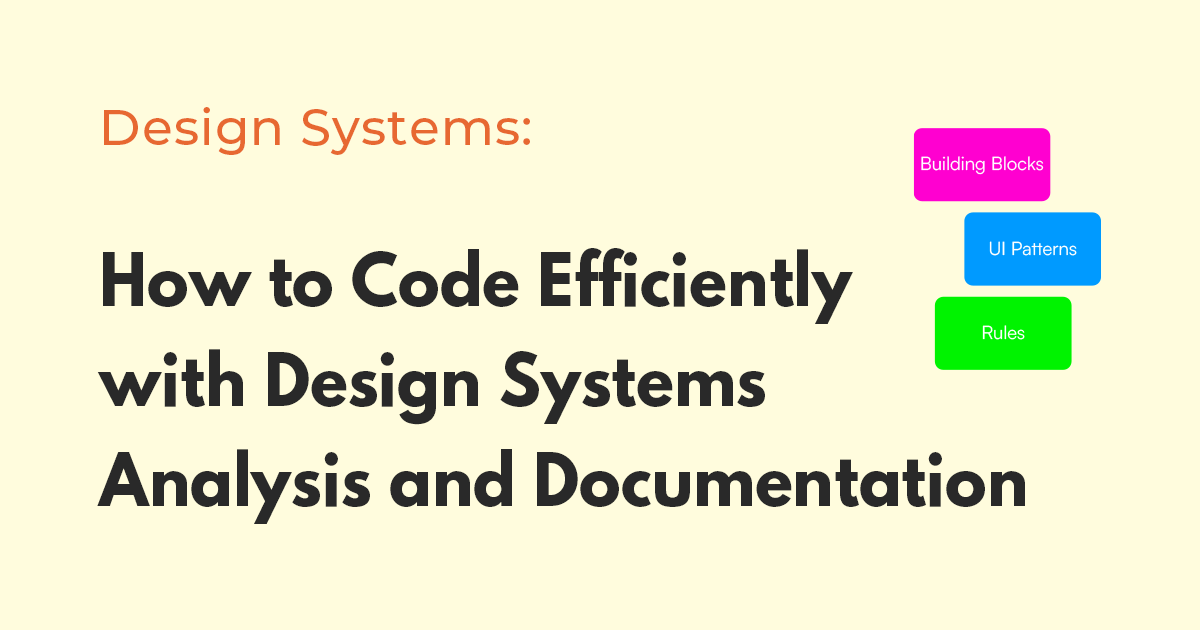Efficiency is a crucial aspect of coding, enabling developers to write clean, scalable, and maintainable code. One powerful approach to achieving efficiency in software development is through the integration of design system analysis and documentation into the coding workflow. By leveraging these techniques, developers can streamline their development process, foster collaboration, and produce high-quality code. In this blog post, we will explore practical steps to code efficiently with design system analysis and documentation.
1. Understand the Design System:
Before delving into the coding process, it is essential to have a thorough understanding of the design system. A design system comprises a collection of reusable components, guidelines, and assets that ensure consistency and cohesiveness across a project. By familiarizing yourself with the design system, you gain insights into the intended behavior, styles, and interactions of the application
2. Analyze the Design System:
Conducting a comprehensive analysis of the design system is key to efficient coding. This analysis involves studying the existing components, guidelines, and patterns established by the design team. By thoroughly understanding the design system, you can effectively align your code with the established patterns and conventions, ensuring consistency throughout the application.
3. Apply Design Patterns:
Design patterns are proven solutions to common software development challenges. By incorporating design patterns defined in the design system, you promote consistency and efficiency in your code. Design patterns also facilitate better collaboration among developers as they provide a common language and structure for understanding and maintaining the codebase.
4. Create Reusable Components:
Reusability is a fundamental aspect of design systems. By creating reusable components that adhere to the design system's guidelines, you save development time and effort while ensuring consistency. Reusable components also contribute to a modular and maintainable codebase, allowing for easy modifications and updates.
5. Document Your Code:
Documentation is often overlooked but plays a critical role in coding efficiency. By documenting your code, you create a valuable reference for yourself and other developers, making it easier to understand and modify the codebase. Documenting how you have integrated the design system into your codebase helps ensure consistency and clarity, especially when collaborating with designers and other developers.
6. Collaborate and Communicate:
Efficient coding practices thrive on effective collaboration and communication within a development team. By aligning your code with the design system, you establish a common language that facilitates seamless collaboration between designers and developers. Regular communication and feedback loops help identify areas for improvement and ensure that the codebase remains aligned with the design system.
7. Embrace Iterative Improvement:
Efficiency in coding is an iterative process. Regularly analyze and evaluate the effectiveness of your codebase in terms of its adherence to the design system and overall efficiency. Update and improve your documentation continuously and collaborate with the design team to incorporate their feedback and evolve the design system accordingly.
Efficient coding with design system analysis and documentation is a powerful approach to streamline the development process and produce high-quality code. By understanding the design system, applying design patterns, creating reusable components, and documenting your code, you can enhance consistency, maintainability, and scalability. Collaboration and communication with the design team are essential for ensuring a seamless integration of the design system into the codebase. Remember, efficiency is an ongoing effort, and continuous improvement is the key to success. Embrace design system analysis and documentation to become a more efficient and effective developer.
Related Posts









